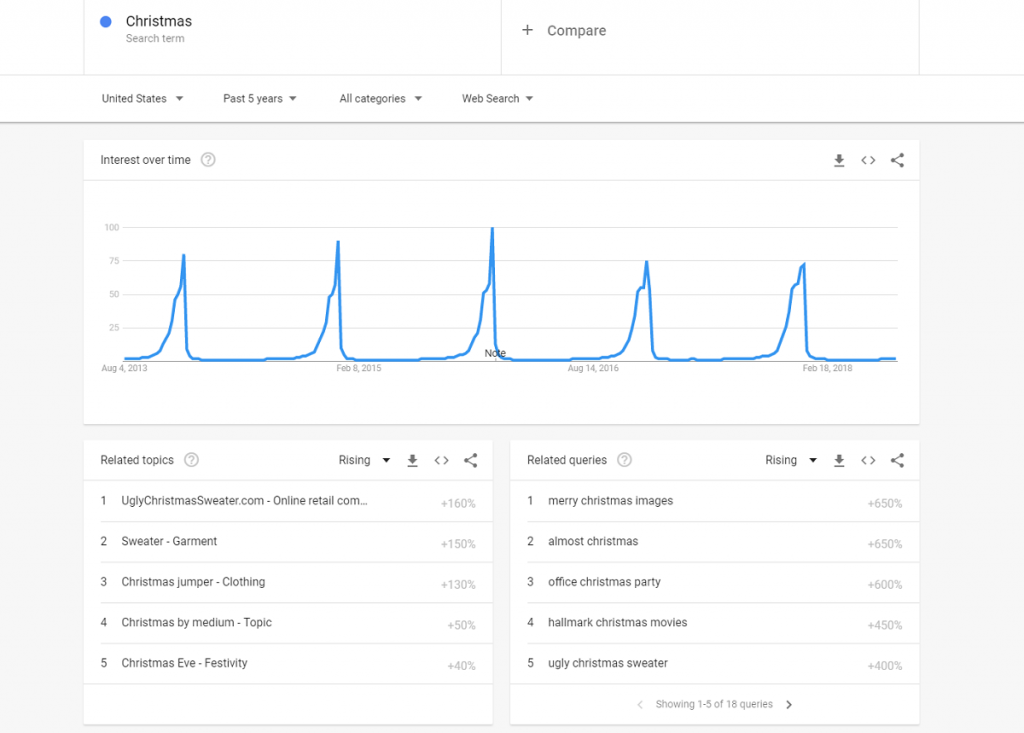Last Updated on January 15, 2020 by Anthony
Content marketing is one of the main strategies that helps websites get traffic and leads. According to statistics, blogging is the most popular type of content marketing worldwide. Marketers have already learned that producing articles that stay relevant and up-to-date over time is much more rewarding and less expensive. But is it always a good strategy?
Trending and Evergreen Content: What’s the Difference
The difference between the two types of content seems obvious and depends on how long the content stays relevant and useful to readers. Evergreen content, as you can tell from its title, stays ‘fresh’ and up-to-date for a longer time than trending content. The latter stays ‘hot’ for just a few days or weeks at most.
Benefits of Trending Content
Most marketers neglect ‘hot’ topics because of their volatility. They may make a massive jump in traffic numbers but prove useless even a week or month later. However, there are a few advantages of those types of posts for your blog.
- Virality. Trending topics usually attract a lot of attention and get lots of shares. Users love breaking news, hot topics, exciting videos, fads, etc., so it may be a good idea to use these for short articles or social media posts that may bring you a considerable amount of traffic over a short time.
- Relevance. People love reading about the things that are focused on their needs. Thus, creating the hot and seasonal topics that are relevant for your target audience will help you to keep their interest to your blog and boost your website’s trust factor.
- Time and effort. Trending content requires less time and effort to create. It may include a short article on a hot topic or event. You may also drop a list of holiday-related freebies or tips, like “Thanksgiving Day Recipes” or “Best Christmas Freebies,” etc.
For the main part though, websites use trending topics to try to get as many visitors as possible landing on their page. It is good to attract people’s attention to events or activities that a site tries to promote. But after the interest to the trend drops, the traffic to the content will fall too.
Benefits of Evergreen Content

Evergreen content relies on topics that stay trending over time. It never loses its relevance and remains attractive to readers if properly updated. Here are the benefits of evergreen content:
- Relevance. Evergreen topics stay relevant over the time while trends usually fall from the audience’s grace very fast. Which leads us nicely to the next benefit of evergreen content.
- Traffic. People continually search for evergreen topics. For example, articles such as “How to choose a car” or “How to make pizza dough” will be relevant to people’s search queries for years. All you need is update small parts to make them even more relevant.
- Value. It is not only traffic that evergreen articles bring. As they never lose their “freshness,” they bring new backlinks, shares, visitors, and leads.
Relying on evergreen content has always been a good practice. But keeping a happy medium and having a nice mix of both types is even better.
How to Balance Both Types
- Learn about your audience. You should know perfectly well who the people you create content for are. The content should answer users’ questions and be extremely relevant to their search. Be it an evergreen case study of consumer behavior or a seasonal list of freebies; it should appear at the right time and help to solve a particular issue. There are a couple of ways to do this:
- Explore forums and communities on the web that are related to your niche. Doing this means that you can find the most popular or urgent questions your target audience asks.
- Ask your users directly about the issues or ideas they would like to learn from you.
- Newsjack events that are relevant to your target audience and build your content around these.
- Check out your competitors. Chances are they have already covered topics that you haven’t covered yet. Create your content upon a similar theme but make it much better.
- Come up with ideas. When you already know your audience interests, you should add the various content topics into your plan.
Use Google SERP and keyword research tools to find ideas for your evergreen content. Check out your competitors’ keywords to get a list of ones that help them rank in Top10. Long-tail keywords usually work the best for various types of articles due to their less-competitive nature and the ability to bring traffic. But always keep the “searcher’s intent” in mind. If you know exactly how your users are looking for a particular topic then it will be easier for you to find proper keywords to target.
Google Trends is excellent at searching topics and keywords for trending and seasonal content. Thus, checking for “Christmas” in Google Trends, for example, you may find not only the best periods for posting your seasonal articles but also be able to get a full list of keywords that people search for during this holiday in different niches.

When searching for keywords, look at their metrics attentively. A significant search volume doesn’t mean that it’s a good idea to target the given keyword. It may have high competitiveness or a low click rate. Use a proper combination of metrics that will help you to rank.
- Select a proper form of content. To easily decide whether a particular topic suits evergreen or trending article, you can divide content types into groups. Thus, evergreen content is perfect for:
- How-to posts. One of the most popular kinds of articles. How-to’s cover the most common user issues and are a perfect base for evergreen content.
- Tips. Another type that helps users to solve their problems while sending you stable traffic.
- Case studies. I believe that case studies can be a perfect base for evergreen content. You should update them from time to time with fresh information.
- Checklists. All-in-one checklists are popular among various niches – from web design to travel blogs.
Seasonal and trending content can be wrapped in the form of:
- Seasonal recipe collections, lists of the best gifts for a particular event or a holiday, freebies, etc. Just follow the trends and choose the topics that fit your niche.
- Monthly roundups. These may include various “The Best of…” roundups. You may include best tweets on a particular topic or an infographic roundup, etc.
- Company news and events. You may make your brand updates a monthly tradition.
As you may have noticed, you can quickly turn trending type of articles into a kind of periodic content. It will save time and effort spent on creating a content plan.
- Update posts from time to time. Even evergreen topics may become outdated. Some ideas may not work anymore, and some examples may not fit as perfectly as they fit before. So, updating old posts should become a part of your content marketing routine.
- Check out your article performance and consider adding/changing target keywords;
- Rewrite outdated parts, add new stats and information (don’t touch the best parts);
- Change screenshots or images to more fresh/relevant;
- Update the posting date but don’t touch the article URL that already drives traffic.
Trending posts are not necessarily one-time pieces. Thus, seasonal articles can also be a fantastic base for the yearly update. E.g., for a “Christmas recipe collection” article, you may update/restructure it by adding some new recipes for this holiday.
What’s Next

Take a look at your content plan and try to understand where you can utilize evergreen and trending types of content. If you were focusing on creating evergreen articles, try to find a place for trending posts in your marketing plan at least once a month.
You can reuse some trending topics in your evergreen articles. Just make sure that everything you write is relevant for your audience, and they really need it.
Author bio:

Helen is a content marketer at Ahrefs. She explores new things every day to impress her readers with catchy stories. Apart from all that marketing stuff, Helen loves listening to rock music, reading, and traveling. A lot!

